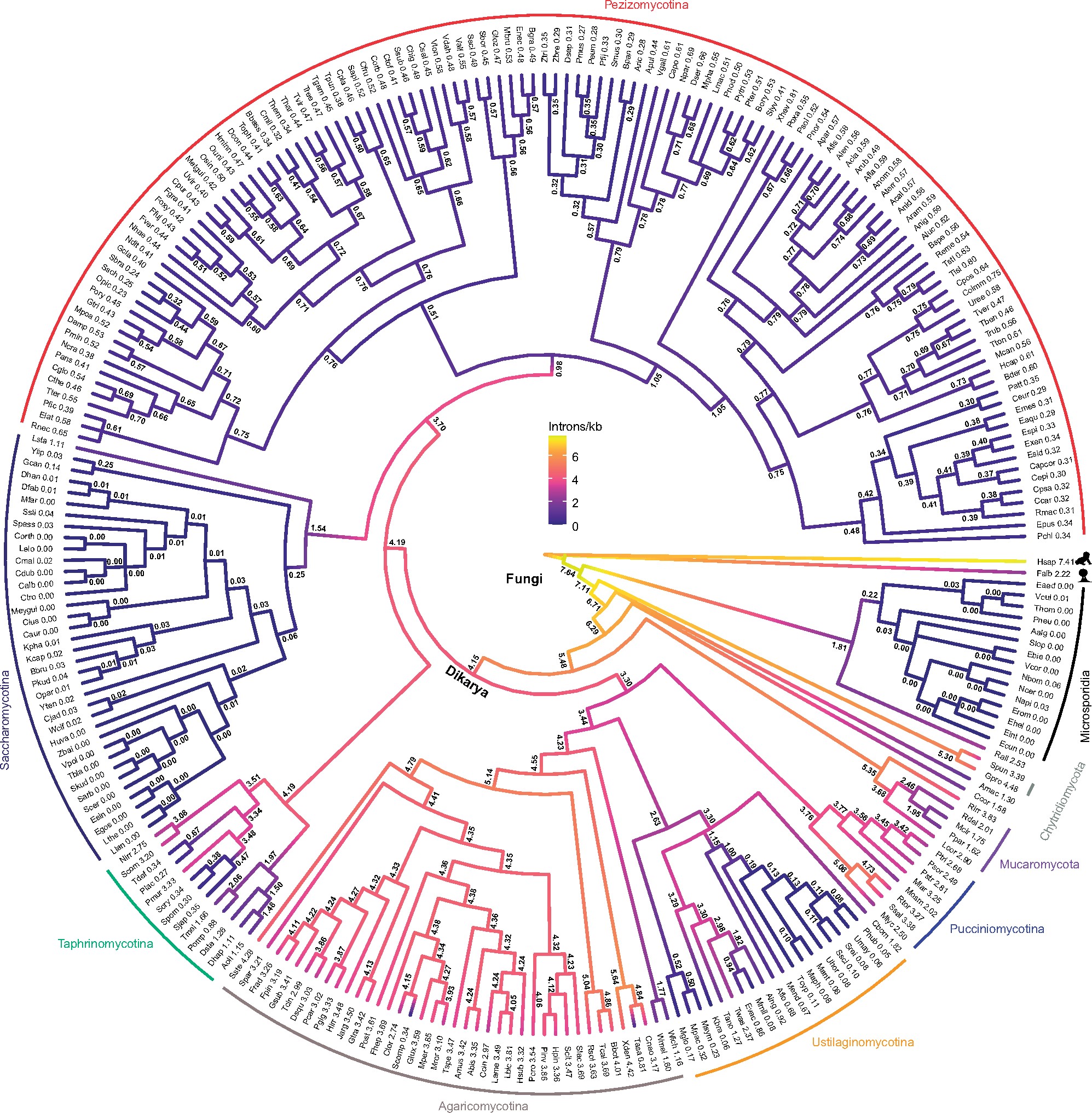How do gene structures emerge?
intron gain or loss
We have reconstructed the evolutionary history of intron presence/absence in fungi and found a general bias towards intron loss over intron gain (Lim et al., 2021). We estimate that all modern species have experienced a net reduction in intron number from an initially highly intron-rich fungal ancestor (>8 introns per kilobase, more than modern humans). Interestingly, we find that these intron gain and loss events have given rise to exons that are 6-fold larger than average exons. Some introns are well conserved across species and even harbour functional noncoding RNAs.


Widespread loss of introns during the evolution of fungi (left). We investigated how does the exon–intron gene structure evolve. We found that intron gain and loss gave rise to significantly larger than average exons (right). In addition, intron gain and loss can occur preferentially at different ends of genes.
References
2021
- Analysis of fungal genomes reveals commonalities of intron gain or loss and functions in intron-poor speciesMolecular Biology and Evolution, 2021